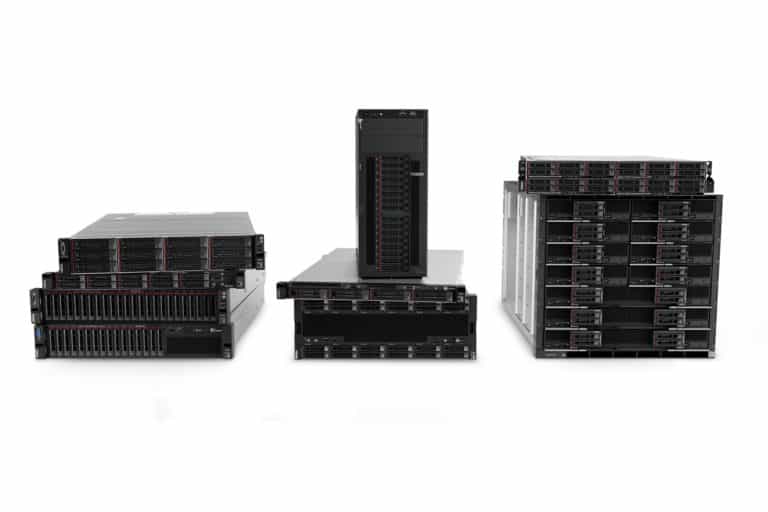Lenovo and NetApp announced a partnership at the Transform 2.0 conference, with the parties focusing on Dell EMC and Hewlett Packard Enterprise (HPE). This is done, among other things, by means of new systems and a Chinese joint venture.
The parties are jointly developing the largest range of new Lenovo storage products to date. They use NetApp’s all-flash data management solutions in conjunction with Lenovo’s ThinkSystem infrastructure. The press release does not contain many details, although the parties are talking about products manufactured by Lenovo using NetApp’s “core software technology”. In addition, the announcement at the conference itself made it a little more clear.
For example, the ThinkSystem DM series is part of the collaboration. Users can scale from two nodes to a 12-array cluster containing up to 28PB SAN or 57PB-NAS capacity. There is also the ThinkSystem DE-series, which includes the DE6000F and DE4000F all-flash arrays. The first is a mid-range storage array with up to one million IOPS and 21 GBps throughput. The DE4000F is an entry-level storage system, with up to 300,000 IOPS and 10 GBps throughput.
China
In addition, there will be a joint venture in China. This company provides storage products and data management solutions tailored to the country. In this way, the parties want to meet China’s special need and cloud ecosystem. It is unclear what the name of the new company is, which still needs approval from local supervisors.
Availability
Both the ThinkSystem DE and the ThinkSystem DM series are now available worldwide, although these are only the first joint solutions. In time, we will see even more joint products from the parties. Lenovo and NetApp expect the joint venture to start operations in the spring of 2019.
Techzine will be present at Transform 2.0 this week. Keep an eye on the website for interesting developments during the conference.
This news article was automatically translated from Dutch to give Techzine.eu a head start. All news articles after September 1, 2019 are written in native English and NOT translated. All our background stories are written in native English as well. For more information read our launch article.